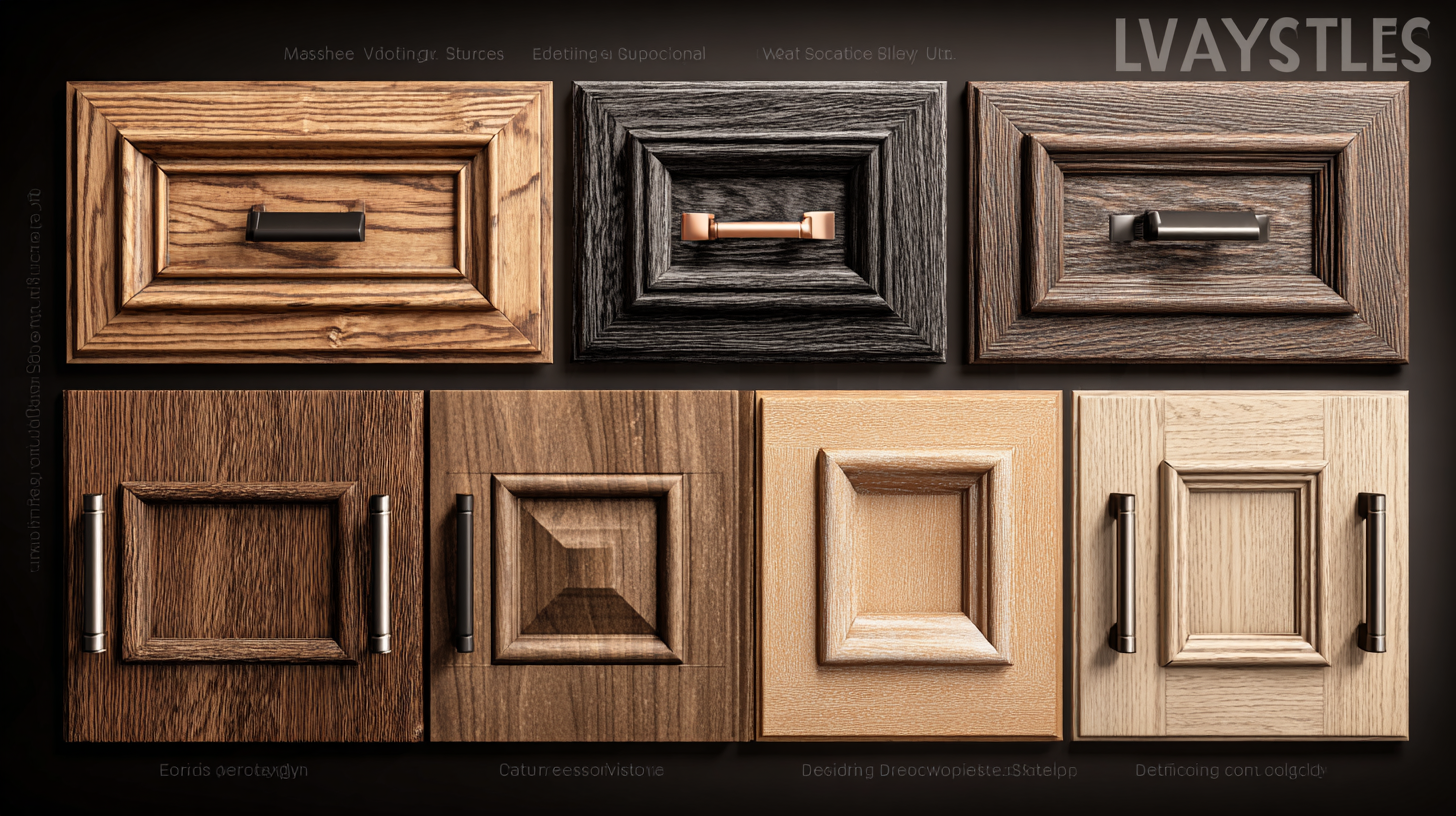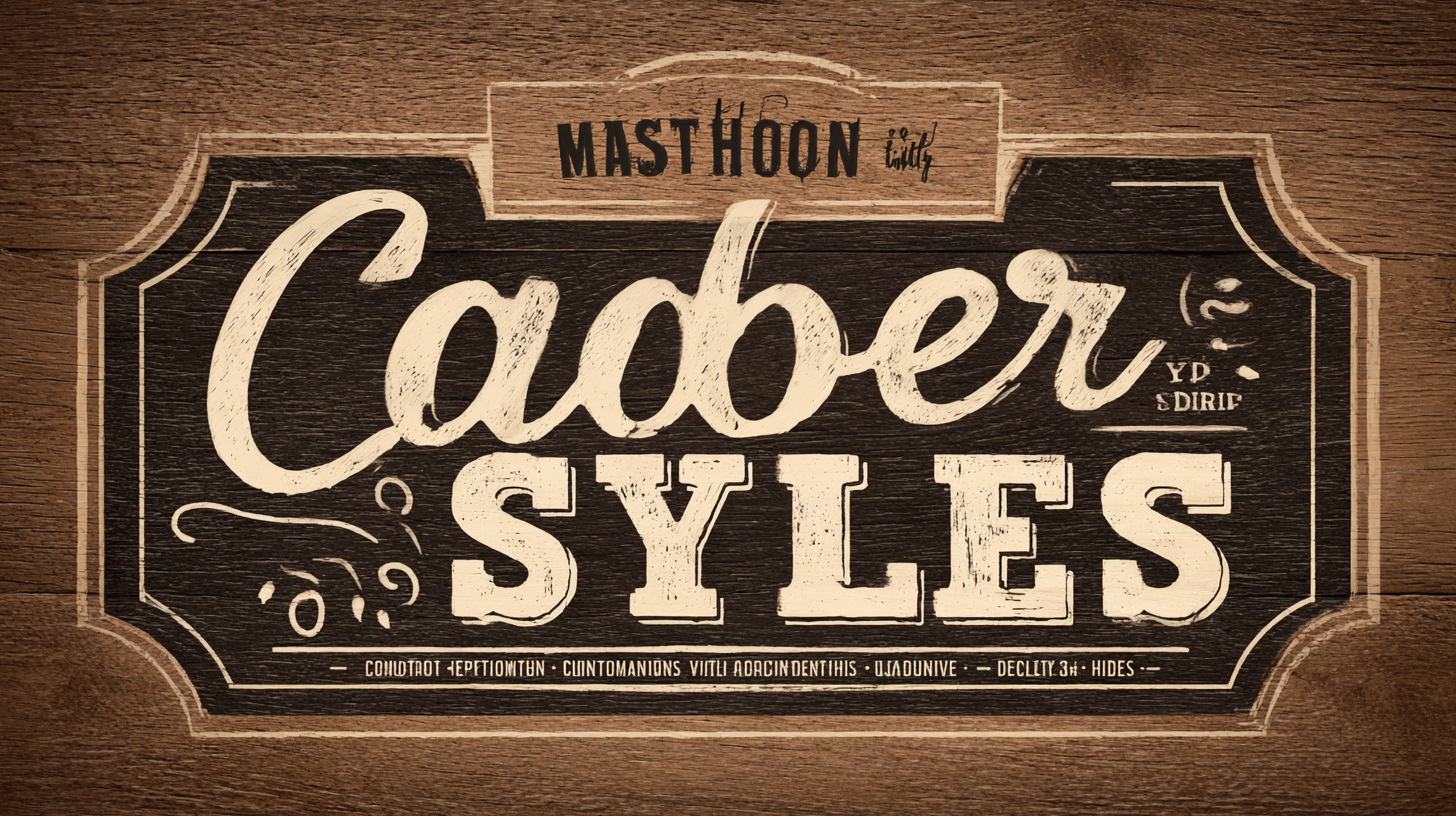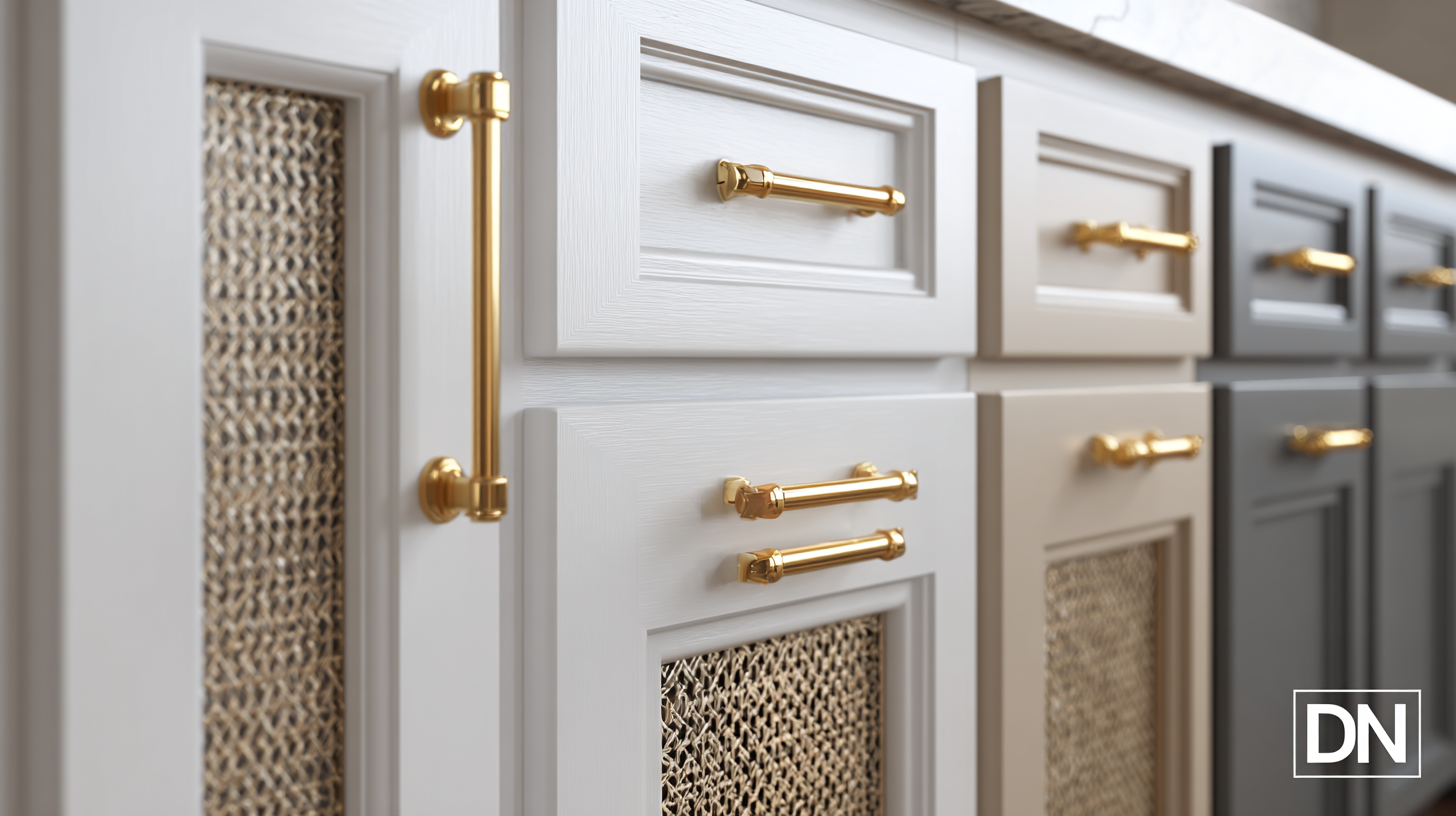Mastering Cabinet Door Styles with Detailed Technical Specs and Comprehensive Installation Guide
In the realm of interior design and cabinetry, the significance of mastering Cabinet Door Styles cannot be overstated, as these choices profoundly impact both aesthetics and functionality. According to the latest report from the Kitchen & Bath Association, nearly 70% of homeowners prioritize cabinetry when remodeling their kitchens, highlighting the growing importance of innovative cabinet door designs.

However, as cabinet styles evolve, so do the challenges associated with their installation and integration within various spaces. Common problems arise from mismatched styles, installation errors, and the complexities of maintaining a cohesive design with modern trends. This blog aims to provide a comprehensive overview of cabinet door styles, including detailed technical specifications and a thorough installation guide, to help industry professionals and DIY enthusiasts alike navigate these common pitfalls effectively.
Exploring Alternatives: A Deep Dive into Cabinet Door Style Variations
When exploring cabinet door style variations, it's essential to consider the rising trend of black kitchen cabinets. According to a recent industry report, black cabinetry has seen a 25% increase in popularity among homeowners, appealing to those who desire both modern elegance and timeless sophistication. This versatile color pairs effortlessly with a variety of materials and accent colors, making it a go-to choice for contemporary kitchen designs in 2024.
For those contemplating a kitchen makeover, utilizing black cabinetry can create striking visual contrasts. To achieve a balanced look, consider pairing black doors with lighter countertops and backsplashes. This not only enhances the cabinetry but also ensures the space feels open and inviting. Additionally, incorporating matte black finishes can lend a more refined touch, aligning with the ongoing trend of minimalism and textured surfaces.
Tips: When selecting cabinet styles, pay attention to the technical specifications that define their construction quality, such as hinge types and thickness of material. Opting for durable materials like solid wood or plywood can significantly impact longevity. Moreover, a detailed installation guide can make the DIY process smoother, allowing for a professional finish without the added cost of hiring a contractor.
Analyzing Popular Alternatives: Comparing Materials for Cabinet Doors
When choosing cabinet doors, the material plays a crucial role in both aesthetics and functionality. In recent years, there has been a significant shift towards eco-friendly alternatives, particularly natural fiber composites. These materials, made from renewable resources like jute, hemp, and flax, offer a sustainable option that minimizes the environmental impact often associated with conventional materials. As consumers become more environmentally conscious, the demand for natural fiber composites in cabinet doors is expected to increase, driven by their durability and unique textures.
Alongside this trend, the analysis of various materials used in residential bathroom cabinets reveals a growing preference for options that combine style with sustainability. The market is diversifying, featuring choices from traditional wood to metal finishes, but it is the introduction of eco-friendly composites that is capturing attention. A life cycle analysis of furniture production highlights the benefits of using sustainable materials in terms of reduced ecological footprints. As homeowners seek to create stylish yet environmentally responsible spaces, understanding these material alternatives becomes essential in making informed decisions about cabinet door styles that align with contemporary values.
Technical Specifications: Understanding Dimensions and Profiles in Cabinet Doors
When selecting cabinet doors, understanding the technical specifications such as dimensions and profiles is crucial for both aesthetics and functionality. According to a report from the Cabinet Makers Association, the most common cabinet door width ranges from 18 to 24 inches, while heights typically vary from 30 to 42 inches. These measurements not only affect the overall design but also influence the door's performance, ensuring that hinges fit properly and that doors open smoothly without obstruction.
**Tip:** Always measure your cabinet frames before ordering doors. An accurate measurement will prevent costly mistakes and delays.
Profiles also play a significant role in cabinet design. The two most popular profiles include Shaker and Raised Panel, each offering distinct visual appeal. A survey by the National Kitchen & Bath Association indicated that 42% of homeowners prefer Shaker-style doors for their simplicity and versatility, which can complement various design themes.
**Tip:** Consider the overall theme of your kitchen when choosing profiles. A traditional kitchen might benefit from classic Raised Panel doors, while a contemporary space may shine with minimalist Shaker designs.

Installation Techniques: Best Practices for Alternative Cabinet Door Styles
When it comes to alternative cabinet door styles, choosing the right installation technique can make all the difference in achieving a polished and professional look. Whether you're opting for Shaker, slab, or raised panel doors, understanding best practices is crucial. Begin by ensuring that all your measurements are accurate; improper sizing can lead to poor alignment and gaps. Mark your hinge locations precisely, as this will help facilitate a smooth installation process.

Tip: Always use a level when hanging doors to ensure they are straight. A minor misalignment can be visually distracting and affect functionality. Additionally, when attaching the hinges, use screws that are suitable for the weight of the door to prevent any sagging over time.
Another important aspect of installation is adjusting the doors after they are hung. For alternative styles like inset cabinets, ensuring that the gaps are consistent requires patience and precision. Carefully adjust the hinges to achieve the desired reveal, and don't hesitate to use shims where necessary to compensate for any imperfections in the cabinet structure.
Tip: If you're working with a particularly heavy door, consider using a second pair of hands to hold it in place while you secure the hinges. This not only makes handling easier but also contributes to a cleaner installation, avoiding any unnecessary stress on the material.
Industry Trends: The Impact of Eco-Friendly Materials on Cabinet Door Design
In recent years, the trend towards eco-friendly materials has significantly influenced cabinet door design, reshaping both aesthetics and functionality. Homeowners are increasingly looking for options that not only enhance their living space but also align with sustainable practices. Eco-friendly materials such as bamboo, recycled wood, and low-VOC finishes are becoming popular choices among designers and manufacturers. These materials not only reduce environmental impact but also add a unique touch to cabinet doors, making them more appealing to consumers who value sustainability.
Tip: When considering eco-friendly cabinet doors, look for certifications such as FSC (Forest Stewardship Council) to ensure that your materials are sourced sustainably. This can help you make a more informed choice and contribute positively to forest conservation efforts.
Moreover, the use of eco-friendly materials can also enhance the durability of cabinet doors. Many modern sustainable options are engineered to withstand moisture and everyday wear, making them an excellent choice for kitchens and bathrooms. As the industry adapts to these trends, we can expect to see innovative designs that marry sustainability with style.
Tip: Always check the maintenance requirements of eco-friendly materials; some may require special care to maintain their appearance and longevity. It's crucial to choose materials that suit your lifestyle while still being environmentally responsible.
Impact of Eco-Friendly Materials on Cabinet Door Design


Fall into Function: How LaFata Cabinets Prepares Your Kitchen for the Cozy Season


Back-to-School Kitchen Refresh: How LaFata Cabinets Can Help You Stay Organized This Fall


